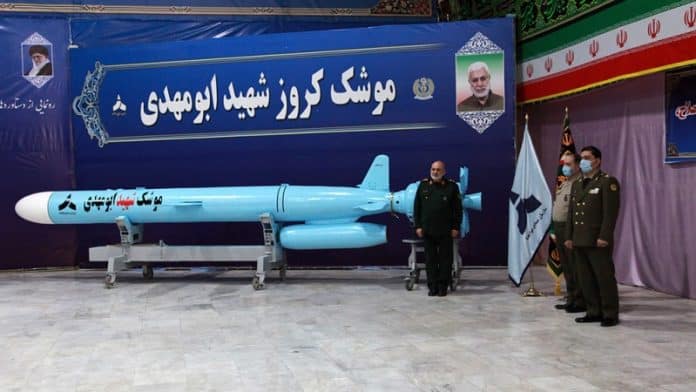On December 22, 2023, the commander of the Iran IRGC Navy, Alireza Tangsiri, stated according to Iranian media that the naval forces of the Islamic Revolutionary Guard Corps (IRGC) now possess Abu Mahdi cruise missiles equipped with artificial intelligence (AI) technology, significantly enhancing their maritime offensive capabilities and allowing them to be remotely guided after launch.
According to the Iranian naval commander, the addition of AI to the Abu Mahdi missiles would allow for greater precision and improved maneuverability. With this technology, the missiles could now analyze data in real-time, adjust their trajectory during flight, and more effectively evade enemy defense systems. AI would also provide the ability to make autonomous decisions to optimize flight trajectories, thus increasing the likelihood of mission success.
The Abu Mahdi missile, named after the Iranian military commander Abu Mahdi al-Muhandis, was unveiled to the world in August 2020. This weapon represents a significant advancement in the Iranian arsenal, surpassing its predecessors in terms of range and capabilities.
Designed specifically for naval operations, the “Martyr Abu-Mahdi” is a high-precision cruise missile capable of striking targets with remarkable accuracy. Fully developed by Iran, this cruise missile constitutes a significant enhancement of the country’s military power. Created as part of Iran’s ongoing efforts to improve its defense capabilities and deter any potential aggression, the Abu Mahdi, with its range exceeding 1,000 kilometers, is capable of effectively targeting maritime objectives at a great distance.
Equipped with a turbojet engine and designed for naval missions, this missile is capable of reaching high speeds and maintaining a stable and precise flight trajectory. Its features enable it to counter electronic warfare and avoid radar systems, making it particularly effective in complex combat environments.
The introduction of AI into the Abu Mahdi missiles illustrates Iran’s commitment to strengthening its military capabilities to compensate for its naval and aerial limitations. This technological advancement could alter the balance of power in the region, providing Iran with a more effective means to deter potential threats and protect its maritime interests.
In general, the integration of artificial intelligence (AI) into cruise missiles used by naval forces presents a series of considerable advantages, radically transforming their operational efficiency. First, AI enhances strike precision by analyzing and adjusting trajectory in real-time, which is essential for accurately targeting while minimizing collateral damage. It also provides missiles with the capability of autonomous decision-making, allowing them to adaptively respond to dynamic environments and communication jamming situations. This adaptability is crucial, particularly for countering electronic countermeasures and adapting to unexpected target movements. Moreover, AI-equipped missiles are capable of identifying and avoiding anti-missile defense systems, thereby increasing their chances of success.
The optimization of fuel management and trajectory by AI extends the missiles’ range and flight duration. AI can also process reconnaissance data in flight, adjusting the mission based on updated information, which is crucial for the accuracy and relevance of the attack. By reducing the need for direct human control, AI also decreases the risks for operators, while ensuring better interoperability with other weapon systems, which is fundamental for effective coordination in complex military operations. In summary, AI confers greater flexibility, improved efficiency, and increased power to cruise missiles, playing a key role in the evolution of naval military capabilities.













